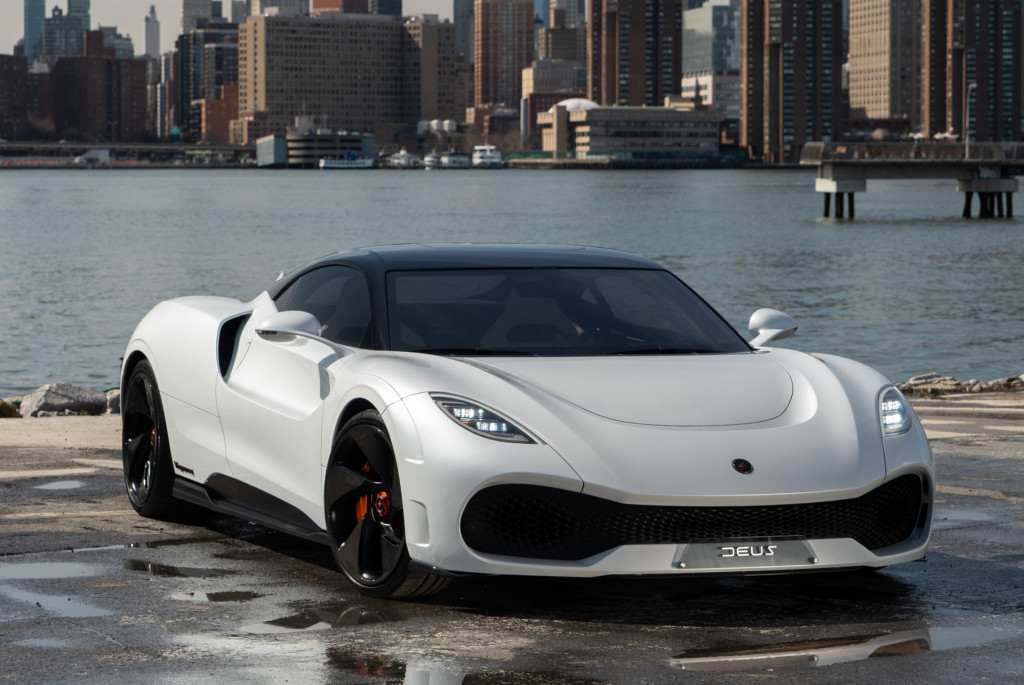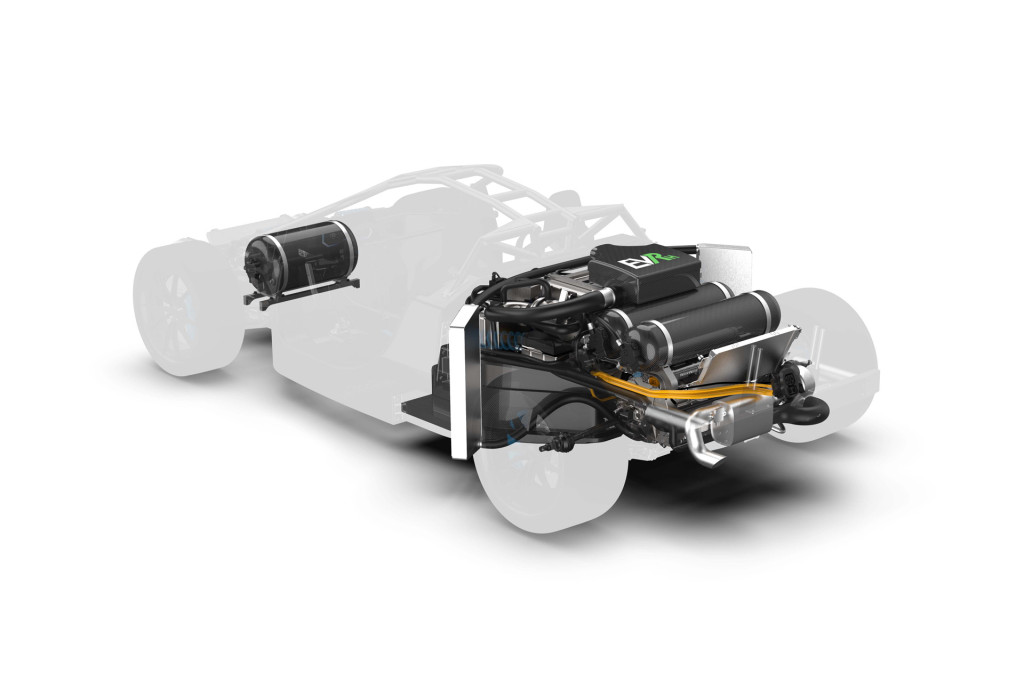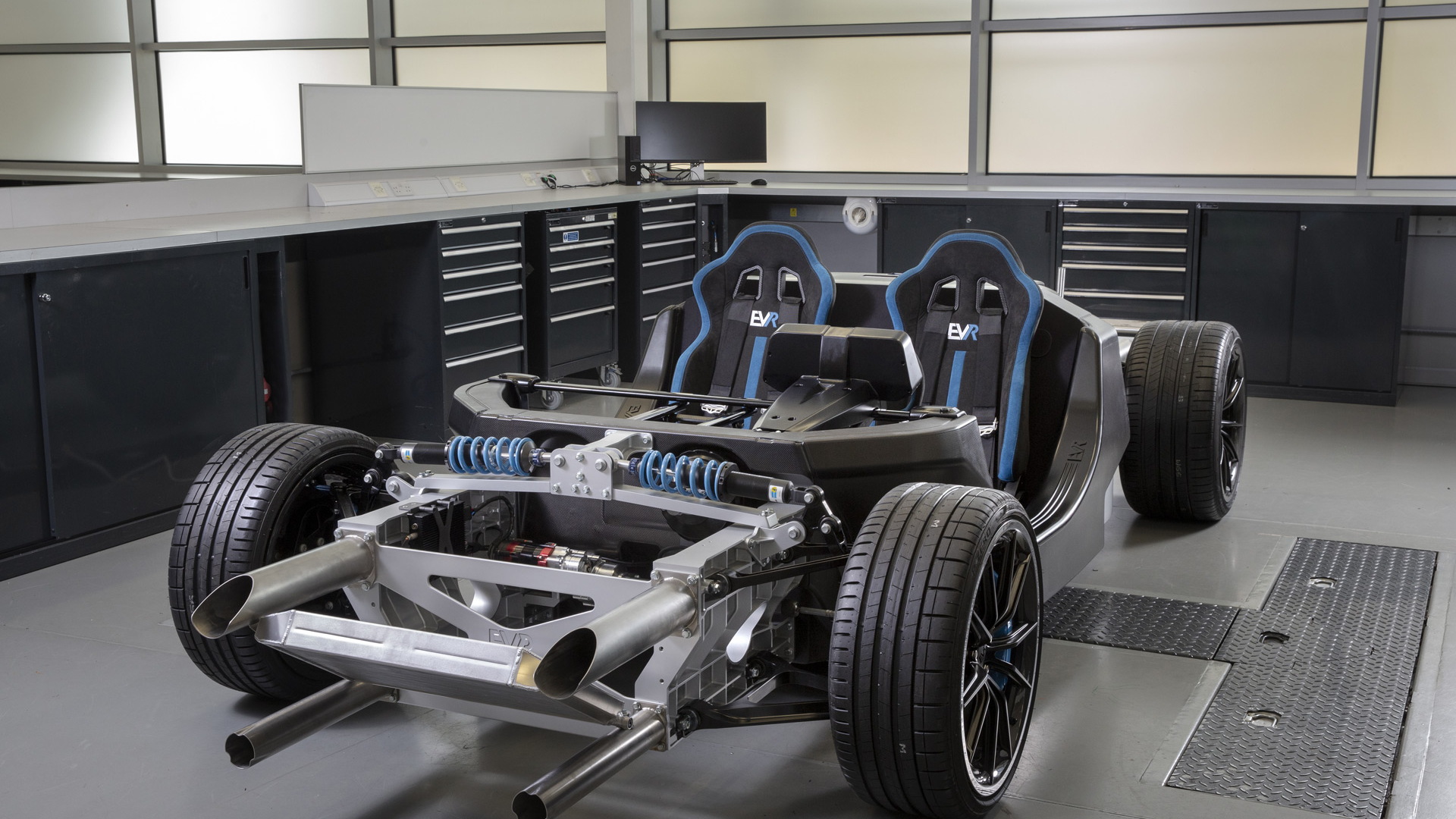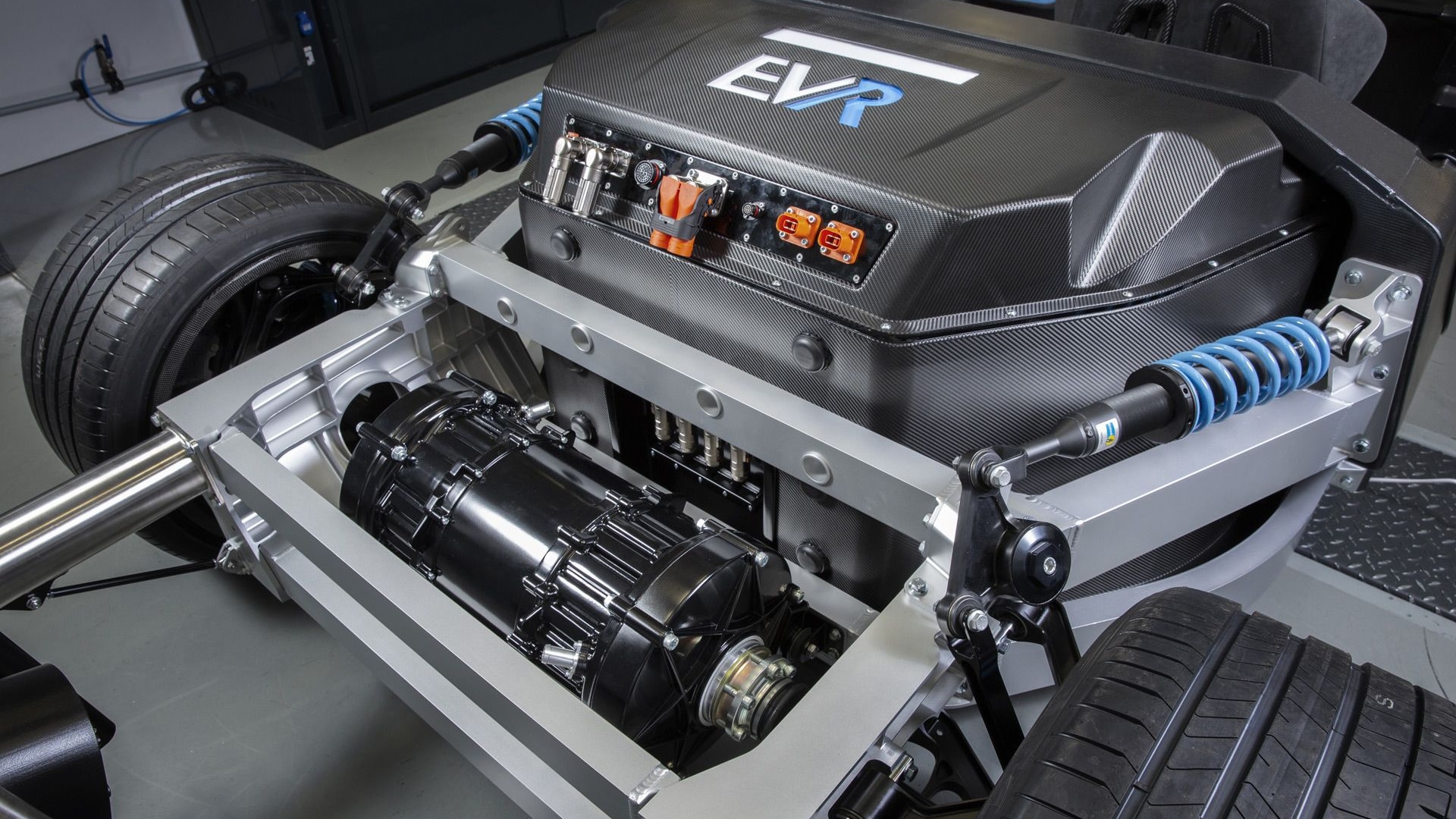Williams Advanced Engineering (WAE), the technology offshoot of the Williams Formula 1 team, used this week's Low Carbon Vehicle Show in the U.K. to present the EVR, a modular electric-vehicle platform designed specifically for hypercar applications.
The company in 2021 presented a similar platform known as the EVX, which was developed to suit a variety of body styles and could support outputs as high as 1,341 hp. The EVR is more limited in the types of vehicles it can support, though its power band runs up to 2,212 hp.
Despite still being in development, the platform already has a customer in the form of Deus. The Austrian startup in April presented an electric hypercar built around the EVR platform.

Deus Vayanne
The EVR features a lightweight composite structure that serves as the passenger cell, with the battery mounted behind it instead of in the floor, like in most EVs on sale today. Porsche took a similar route with its Mission R electric race car concept unveiled in 2021. The design avoids the issue of having a raised floor, while also replicating the familiar weight distribution of a mid-engine car. The EVR has also been designed without a roof, ensuring it supports open-top body styles.
The battery is an 85-kwh unit that WAE claims should deliver approximately 280 miles of range, and both rear- and all-wheel-drive configurations are supported. The range will depend largely on how the vehicle is driven. Making 0-60 mph acceleration runs in less than 2.0 seconds and driving up to the 248-mph top speed will certainly curb the range dramatically.
WAE said the EVR can be updated over time as battery and electric motor technology improves. The company also has a version of the platform that supports a hydrogen fuel cell stack as a range extender.

Williams Advanced Engineering EVR modular electric vehicle platform with fuel cell range extender
While companies can order the platform as a rolling chassis, WAE also plans to offer a turnkey solution in which the company can deliver a working prototype within 12 months of the project launch and a production vehicle within 24 months.
The Low Carbon Vehicle Show runs until Sept. 8 at the U.K.'s Millbrook Proving Ground. WAE also used the event to present a modular battery system for EVs, as well as a Triumph electric motorcycle prototype featuring one of its powertrain designs.
WAE was split off from the Williams F1 team in January when it was acquired by Fortescue Metals Group, an Australian mining company that intends to tap the engineering company's expertise for the development of eco-friendly freight trains, mining trucks, and industrial heavy mobile equipment. However, WAE plans to continue offering its engineering services to third parties, as well as off-the-shelf solutions like the EVX and new EVR platforms.






